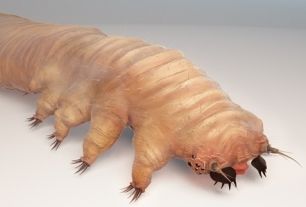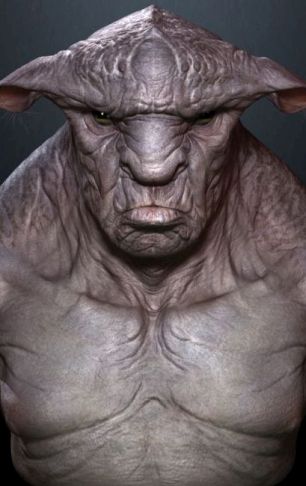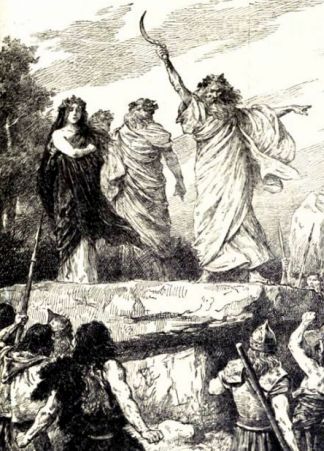Abami
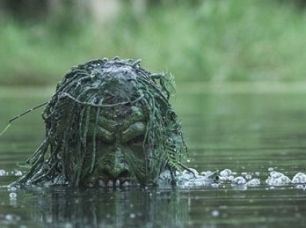
The malacious abamies lurk in languid rivers, deep lakes, and trackless swamps. Combining features humanoid and reptilian, abamies walk on two legs, swim silently, and their leathery flesh and scales provide natural camouflage due to their coloration and texture. It is mostly likely that abamies are a type of wicked water fairy, but some scholars claim they are either undead or devils (or both). Whatever the truth, abamies revel in cruelty. They use their stealth and magical abilities to lure victims into ambushes, to cause confusion and fear, and to torment travelers.
When an abami attacks, it usually does so by surprise, using its hooked claws and jagged fangs. If both claw attacks hit a target, an abami gets a +2 to-hit bonus on its bite attack. Should all three attacks hit a target, the abami clamps its maw across the victim’s mouth and jaw and tries to steal the victim’s breath. Unless the victim succeeds in a saving throw, the abami steals his breath, which leaves the victim unable to speak, use breath weapons, or cast spells for 1d4 rounds. The victim also takes 1d6 points of damage each round from not being able to breathe. Once per day each, an abami can use the following spells: Obscuring Mist, Protection from Good, and Sticks to Snakes.
Abami: HD 3+3; AC 4 [15]; Atk 2 claws (1d4), 1 bite (1d6); Move 9/15 (swimming); Save 14; AL C; CL/XP 5/240; Special: 4 in 6 chance to surprise prey, spells, steal breath.
Eekanna
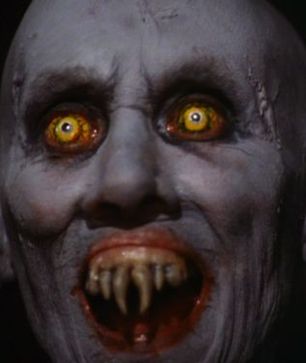
An eekanna is an undead monster that in life was a man or woman who embraced violence and deceit before being caught and executed (or lynched). In undeath, the creature burns with a mad passion to terrorize and maim. During the day, an eekanna hides away from the sun, perhaps in a sewer system or in a lightless cavern. When the sun sets, which is something the creature can mystically sense, it scurries from its lair in order hunt, seeking to inflict pain and create strife, for an eekanna is a sort of psychic vampire, feeding on the suffering of living creatures. The younger and more innocent the victim, the sweeter the meal.
An eekana radiates a profane aura that affects Lawful creatures within 20 feet as well as normal animals. The latter are automatically affected as if by a Fear spell (no saving throw). Lawful creatures suffer a -1 penalty to attack rolls and saving throws within the aura, and magical healing in the same area has no more than its minimal effects. This monster attacks with its long claws and horrible fangs. Its bite causes rage unless the victim makes a saving throw. Otherwise, a bite victim attacks the nearest creature other than the eekana with murderous intent, striking with a +2 bonus to-hit (and no longer being affected by the monster’s profane aura until the rage passes in 2d4 rounds). Looking into an eekana’s terrible eyes forces a saving throw to avoid paralysis for 2d10 rounds. In and between areas of darkness, an eekana can use Dimension Door.
Eekanas hate light. Illumination other than candlelight or moonlight pains the monster, causing it to suffer a -2 penalty on to-hit rolls. A Light spell inflicts 1d6 points of damage if cast on or near an eekana, and Continual Light inflicts 3d6 points of damage and forces the monster to retreat from the area. Actual sunlight will kill an eekana in 1d4+1 rounds (reducing its hit points by an appropriate amount each round). Eekanas also hate the smell of apples and apple blossoms, and they retreat from these objects.
Eekanna: HD 5-7; AC 3 [16]; Atk 2 claws (1d6), 1 bite (1d4); Move 15; Save 12, 11, or 9; AL C; CL/XP 5 HD (7/600), 6 HD (8/800), 7 HD (9/1,100); Special: bite causes rage, Dimension Door (in darkness only), gaze causes paralysis, profane aura, undead.
Opolo
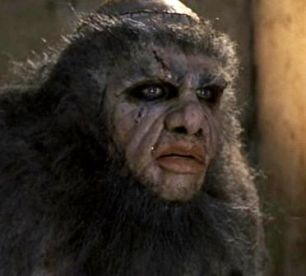
Brutish, shaggy, and violent, opolos are gorilla-like humanoids most often found in rugged highlands and forests where they live in caves or ruins. An adult opolo stands at least as tall as a man, and it is powerfully built and covered with tangled, smelly fur, except for its face, hands, feet, and the top of its head. A close observer may notice the deep groove that circles an opolo’s head at the hairline. These monsters do not wear clothes and seldom use tools or weapons. Despite their primitive appearance and habits, opoloes are not unintelligent and exhibit a devious, cold cunning.
An opolo’s keen senses, especially its senses of smell and hearing, make it difficult to surprise. In combat, it attacks with its thick, short claws and its powerful fangs. If both claws hit the same target, an opolo rends its victim, tearing flesh and inflicting an additional 1d8 points of damage. Instead of attacking, an opolo can open the top of its skull (hence the aforementioned deep groove) and scoop out a bit of its brain. The next round, it releases this bit of gray matter at a target within 60 feet (no attack roll necessary). The victim must make a saving throw. Otherwise, the bit of brain soaks through the victim’s flesh. After 1d6 rounds, the hunk of gray matter reaches the victim’s brain, causing feeblemindedness. A Cure Disease stops this process and can also reverse the feeblemindedness.
Opolo: HD 5; AC 6 [13]; Atk 2 claws (1d4), 1 bite (1d8); Move 12; Save 12; AL C; CL/XP 7/600; Special: piece of its mind, rending (1d8), surprised on a 1.
Tags: monsters, Swords & Wizardry


